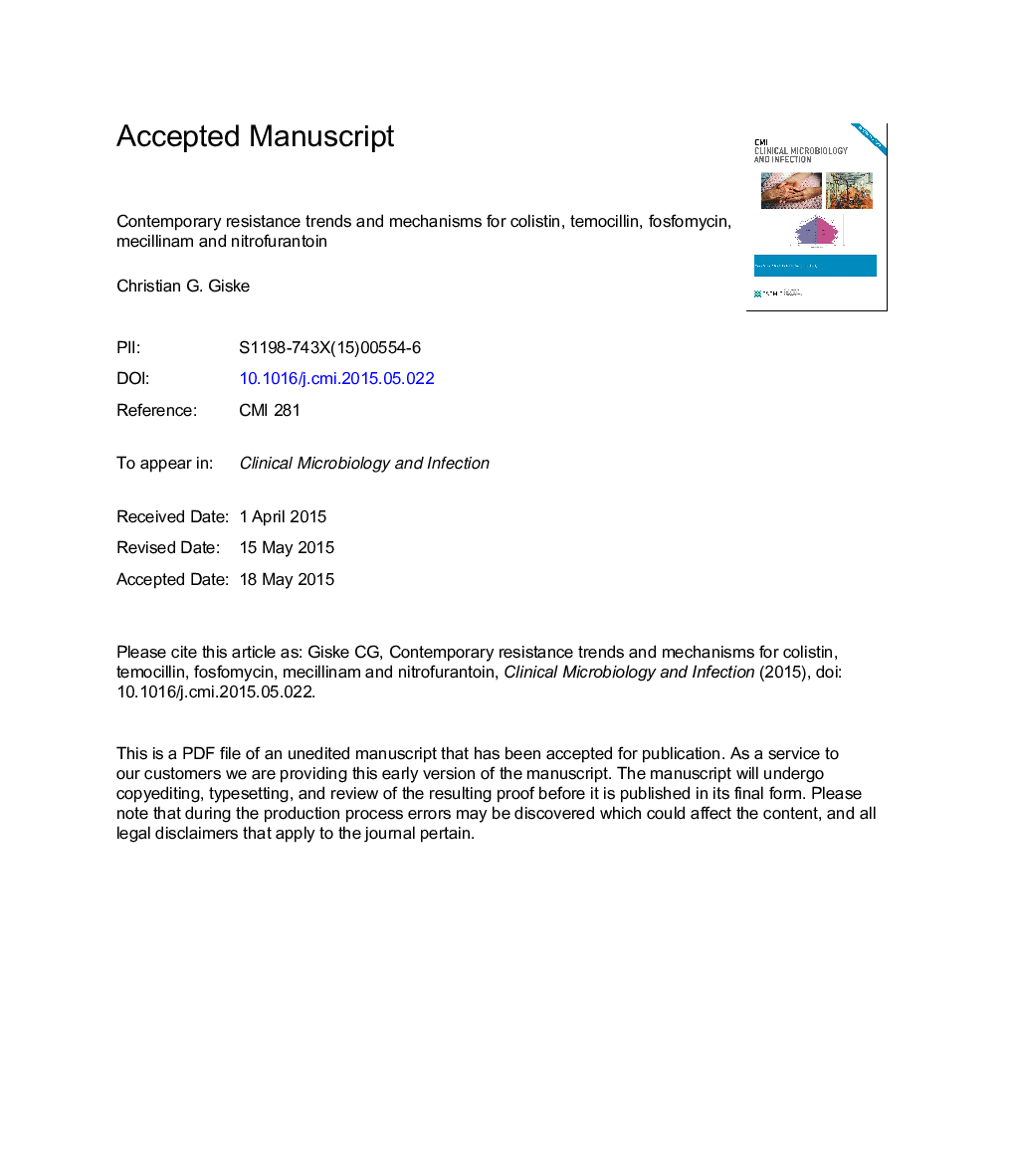| کد مقاله | کد نشریه | سال انتشار | مقاله انگلیسی | نسخه تمام متن |
|---|---|---|---|---|
| 6129142 | 1222151 | 2015 | 23 صفحه PDF | دانلود رایگان |
عنوان انگلیسی مقاله ISI
Contemporary resistance trends and mechanisms for the old antibiotics colistin, temocillin, fosfomycin, mecillinam and nitrofurantoin
ترجمه فارسی عنوان
روندهای مقاومتی معاصر و مکانیزم های آنتی بیوتیک های قدیمی کولستین، تموسیلین، فسفومایسین، مکیلینام و نیتروفورانتوئین
دانلود مقاله + سفارش ترجمه
دانلود مقاله ISI انگلیسی
رایگان برای ایرانیان
کلمات کلیدی
موضوعات مرتبط
علوم زیستی و بیوفناوری
ایمنی شناسی و میکروب شناسی
میکروب شناسی
چکیده انگلیسی
Recently there has been a renewed interest in reviving older antimicrobial agents, particularly those with activity against multidrug-resistant Gram-negative bacilli. Because many such antimicrobials are not licensed in all countries, there is a paucity of international surveillance data, and none of these agents is part of any antimicrobial resistance surveillance on the level of the EU. Some of the agents are used in lower urinary tract infection, whereas most available supranational surveillance data pertain to severe infections such as bloodstream infections. Among old antimicrobial agents, the most interesting compounds from a clinical perspective are the two intravenous agents colistin and temocillin, the two oral agents pivmecillinam and nitrofurantoin, and fosfomycin, which is available both for intravenous and oral use. The most interesting target microorganisms are Enterobacteriaceae, although colistin also has good activity against Pseudomonas aeruginosa and Acinetobacter species. Recent European surveillance data point to approximately 5% resistance to colistin in general among Klebsiella pneumoniae, whereas resistance in carbapenemase-producing Enterobacteriaceae may be up to 15% to 20% in some settings. Temocillin is stable against many extended-spectrum β-lactamase-producing Enterobacteriaceae and some carbapenemase producers, but low-level resistance is not uncommon in extended-spectrum β-lactamase producers, and high-level resistance is always seen with OXA-48 group carbapenemases. Fosfomycin resistance is rare in areas with limited use but increasing is in countries with higher usage. Resistance levels to mecillinam and nitrofurantoin are generally low in EU countries, but clinical data supporting treatment efficacy of multidrug-resistant strains are few. Systematic surveillance of the above-mentioned agents will be important, particularly for those agents used in severe infections.
ناشر
Database: Elsevier - ScienceDirect (ساینس دایرکت)
Journal: Clinical Microbiology and Infection - Volume 21, Issue 10, October 2015, Pages 899-905
Journal: Clinical Microbiology and Infection - Volume 21, Issue 10, October 2015, Pages 899-905
نویسندگان
C.G. Giske,
